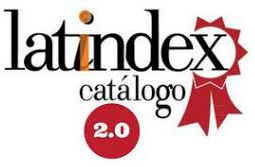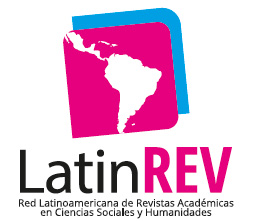Las marcas de cerveza artesana en España: estrategias neolocalistas
Resumen
El presente trabajo examina cómo las cervecerías artesanales utilizan la territorialidad y el neolocalismo para comunicarse con su audiencia. Se identifica que el sector cervecero artesanal contribuye significativamente a la economía y la cultura españolas. A través de un análisis cualitativo de cuarenta y dos cervecerías, se explora la adopción de estrategias de marketing relacionadas con la territorialidad, utilizando el nombre, la cultura y el lenguaje local para fortalecer la identidad de marca y la conexión con el consumidor.
El concepto de “marca de territorio” es central en el sector, donde las cervecerías artesanales, en su mayoría ubicadas fuera de capitales provinciales, promueven valores culturales regionales y nacionales. Además, el estudio demuestra que la territorialidad no solo es una estrategia de marketing para grandes marcas, sino que también es adoptada por cervecerías artesanales para diferenciar sus productos en el mercado. Uno de los resultados de la investigación muestra que estas cervecerías utilizan prácticas sostenibles y participan en eventos culturales para fortalecer su imagen comunitaria.
La presencia digital de estas cervecerías se considera esencial, con un enfoque particular en Instagram, aunque la inversión en campañas publicitarias es limitada. Se enfatiza la necesidad de una estrategia de marketing digital más estructurada para ampliar el conocimiento de marca y aumentar la interacción con los consumidores.
El artículo concluye que el sector cervecero artesanal español se beneficia de la estrategia de marketing basada en la territorialidad y prácticas sostenibles, lo cual fomenta un sentido de comunidad y orgullo local. Sin embargo, sugiere que hay espacio para mejorar la visibilidad y la promoción de estas cervecerías en el ámbito digital. Esta investigación ofrece una representación del sector cervecero artesanal en España, resalta su potencial y los retos a que se enfrenta en el panorama contemporáneo.
Descargas
Citas
Abreu Sojo, L. (2001). El estudio de la imagen pública: ¿la clave del éxito? Notas sobre la evolución de la investigación de campo. Revista Latina de Comunicación Social, 4(39), 1138-5820.
Álvarez-Ruiz, A., y Patiño, C. C. (2020). La cerveza Estrella Damm: Cómo reposicionar estratégicamente una marca estableciendo un territorio propio y movilizando las redes sociales. Pensar la Publicidad, Revista Internacional de Investigaciones Publicitarias, 15(1), 19-42. https://doi.org/10.5209/pepu.71988.
Anholt, S. (2010). Places. Identity, image and reputation. Hampshire: Palgrave Macmillan.
Ashworth, G. J., y Kavaratzis, M. (2009). Beyond the logo: brand management for cities. Journal of Brand Management, 16(8), 520-531.
Basqueland Brewing. (2023, 27 de octubre). Colaboración con @scheneiderbreisse [Fotografía]. Instagram. https://www.instagram.com/p/Cy6CLiPttum/?hl=es
Basqueland Brewing. (2023, 27 de octubre). "Leichte Baskenweisse" [Video]. Instagram. https://www.instagram.com/p/Cy6CLiPttum/?hl=es.
BeerEnthusiast. (2023, 22 de abril). Deep Dive into the Craft Beer Industry [Video]. YouTube. https://www.youtube.com/watch?v=Dt2bH9lqiu.
BeerReviewsSpain. (2023, 15 de marzo). Masterclass in Craft Beer Brewing [Video]. YouTube. https://www.youtube.com/watch?v=Dt2bH9lqiuI.
Bell, F. (2016a). Beyond place branding? the emergence of place reputation: a comparative study of Newcastle, Gateshead, Hull and Bristol [PhD Thesis]. Newcastle University. https://goo.su/Vwe8W.
Bell, F. (2016b). Looking beyond place branding: the emergence of place reputation. Journal of Place Management and Development, 9(3), 247-254. https://doi.org/10.1108/jpmd-08-2016-0055.
Bonviveur (2023, 21 de noviembre). ¿Qué es una IPA? ¿Por qué es la cerveza de moda en España? Recuperado de https://www.bonviveur.es/preguntas/que-es-una-ipa-por-que-es-la-cerveza-de-moda-en-espana.
Brandingmag. (2015, 4 de febrero). The semiotics of brand building. Brandingmag. https://www.brandingmag.com/2015/02/04/the-semiotics-of-brand-building/
Brown, S., Kocinets, R. V., y Sherry, J. F. (2003). Teaching Old Brands New Tricks: Retro Branding and the Revival of Brand Meaning. Journal of Marketing, 67(3), 19-33. https://doi.org/10.1509/jmkg.67.3.19.18657.
Caro Almeda, A. (2007). Fundamentos epistemológicos y metodológicos para un estudio científico de la publicidad. Pensar la publicidad, 1(1), 55-82. https://goo.su/HoMEXnB.
Cerny, P. G. (1997). Paradoxes of the Competition State: The Dynamics of Political Globalization. Government and Opposition, 32(2), 251-274. https://www.jstor.org/stable/44484037.
Cerveceros de España. (2024, 8 de marzo). La cerveza, pilar cultural y económico de España. https://acortar.link/ybh0MO.
Cerveceros de España, y MAPA. (2022). Informe económico del sector de la cerveza en España 2021. https://acortar.link/qD2Iyh.
Cerveceros de España, y MAPA. (2023). Informe económico del sector de la cerveza en España 2022. https://goo.su/DFel.
Cerveza La Sagra. (s.f.). Perfil de Instagram. Instagram. Recuperado el 20 de noviembre de 2023, de https://www.instagram.com/cervezalasagra/?hl=es.
Control de Publicidad. (2020, 13 de abril). Todo vale para vender una cerveza. https://acortar.link/qUrYD4.
CraftBeerChannel. (2023, 10 de marzo). Exploring Artisan Beers of Spain [Video]. YouTube. https://www.youtube.com/watch?v=T09LjJF08FM.
Cristófol, F. J. (2022). Territorio cerveza. Libros.com.
Dalborg, C., Skoglund, W., Ryan, A. W., Högberg, L., Junker, E., Rennemo, Ø., y von Friedrichs, Y. (2023). Craft breweries and local place development – Perspectives from a Scandinavian context. Local Economy, 38(2), 155-176. https://doi.org/10.1177/02690942231199702.
De Almeida, G. G. F., y Almeida, P. (2024). Images of territory in the power relations from territorial brand: An intercultural discussion. GeoJournal, 89(20). https://doi.org/10.1007/s10708-024-11024-7.
De Almeida, G. G. F., y Cardoso, L. (2022). Discussions between place branding and territorial brand in regional development—A classification model proposal for a territorial brand. Sustainability, 14(11), 6669. https://doi.org/10.3390/su14116669.
Grani, L. (2023, 6 de noviembre). Las cervezas artesanas españolas suben como la espuma. Crónica Libre.es. https://urlzs.com/c4Lkk.
Hede, A. M., y Watne, T. (2013, junio). Myths, heroes and folklore: craft breweries delving into place for their brand narratives. In 42nd annual conference: lost in translation: marketing in an interconnected world Istanbul, June 4-7, 2013: conference proceedings. European Marketing Academy.
Holtkamp, C., Shelton, T., Daly, G., Colleen, C., y Hagelman, R. (2016). Assessing Neolocalism in Microbreweries. Applied Geography, 2(1), 66-78. https://doi.org/10.1080/23754931.2015.1114514.
Infoadex (2023, 23 febrero). Estudio InfoAdex de la Inversión Publicitaria en España 2023. https://goo.su/6x77x.
Illuminas (s.f.). How and when to use semiotics in brand research. Illuminas.com https://www.illuminas.com/how-and-when-to-use-semiotics-in-brand-research/.
Install Beer (s.f.). Qué es la Cerveza Artesana Explicación. https://www.installbeer.com/es/blog/cerveza-artesana-explicacion/.
Kincla, T., Sláma, J., Bystřický, V., Březinová, M., y Stejskalová, I. (2022). Microbreweries in the Czech Republic: how does a connection to the local place influence marketing communication? DETUROPE – The Central European Journal of Regional Development and Tourism, 14(2), 45-61. https://acortar.link/mhLbP8.
@la_sagra_beer. (2024, junio 26). #MadridLaSagra [Fotografía]. Instagram. https://www.instagram.com/p/C8EcPvCuyFp/.
Limberger, S. C., y Tulla, A. F. (2015). Oligopolio del mercado cervecero y estrategias competitivas de microcervecerías en Brasil y España. En de la Riva, J., Ibarra, P., Montorio y R., y Rodrigues, M. (Eds.), Análisis espacial y representación geográfica: innovación y aplicación (pp. 2035-2044). https://acortar.link/Ypl3MY.
Lindsay, M. (2000). The brand called Wisconsin: Can we make it relevant and different for competitive advantage? Economic Summit White Paper. http://www.wisconsin.edu/summit/archive/2000/papers/pdf/lindsay.pdf.
Lizette Ramos de Robles, S., y Feria Cuevas, S. (2016). Innovación Educativa, 16(71). https://acortar.link/IonLEW
López-Agulló Pérez-Caballero, J. M., Ávila Rodríguez-de-Mier, B., y García-Chamizo, F. (2023). Territoriality and social values: textual analysis of the #ConMuchoAcento campaign by Cruzcampo beer. British Food Journal, 126(4), 1539-1553. https://doi.org/10.1108/bfj-06-2023-0477.
López-Lita, R., y Benlloch, M. T. (2006). ¿Necesitamos marcas territorio? Técnica económica: Administración y Dirección de empresas, 175, 50-52.
Lucarelli, A. (2022). Inclusivity as civism: theorizing the axiology of marketing and branding of places. Qualitative Market Research, 25(5), 596-613. https://goo.su/lJeKw.
Martínez Rodríguez, A. (2022, 16 de noviembre). Hay casi 4.000 cervezas artesanas españolas. ¿Cómo probarlas todas? El País.com. https://cutt.ly/Zw7CCiOi.
McLachlan, S. (2021, 3 de febrero). Cómo usar los grupos de Facebook para hacer crecer tu negocio e involucrar a tus clientes. Hootsuit. https://blog.hootsuite.com/es/grupos-de-facebook-para-negocios/
Molina Neira, B. (2018). La incorporación de la cultura y el patrimonio en el desarrollo sostenible: desafíos y posibilidades. Revista Humanidades: Revista de la Escuela de Estudios Generales, 8(1), 57-89. https://doi.org/10.15517/h.v8i1.31465.
Murray, A., y Kline, C. (2015). Rural tourism and the craft beer experience: factors influencing brand loyalty in rural North Carolina, USA. Journal of Sustainable Tourism, 23(8-9), 1198-1216. https://doi.org/10.1080/09669582.2014.987146.
Nogué i Font, J. (1999). El retorno al lugar. La creación de identidades territoriales. Claves de la razón práctica, 92, 9-11.
Nurse, K. (2006). Culture as the fourth pillar of sustainable development. Small States: Economic Review and Basic Statistics, 11, 28-40.
Nye, J. S. (2005). Soft Power: The Means to Success in World Politics. PublicAffairs Books.
O'Neill, C., Houtman, D., y Aupers, S. (2014). Advertising real beer: Authenticity claims beyond truth and falsity. European Journal of Cultural Studies, 17(5), 585-601.
Plaza, A. (2023, 27 de agosto). Familias, cervezas y bares en España. El Periódico de España. https://www.epe.es/es/reportajes/20230827/familias-cervezas-bares-espana-91333731.
Plaza, A., y Muñoz, A. (2024, 12 de marzo). Crisis en el sector de cerveceras artesanales. El Periódico de España. https://goo.su/ksox5mc.
Possas, M. L. (1987). Estruturas de mercado em oligopólio. Hucitec.
Sabatini, F. (2019). Culture as fourth pillar of sustainable development: Perspectives for integration, paradigms of action. European Journal of Sustainable Development, 8(3), 31-31. https://doi.org/10.14207/ejsd.2019.v8n3p31.
San Eugenio Vela, J. (2013a). Fundamentos conceptuales y teóricos para marcas de territorio. Boletín de la Asociación de Geógrafos Españoles, 62. https://doi.org/10.21138/bage.1575.
San Eugenio Vela, J., Corrius, M., Ginesta, X., y Binimelis, M. (2013b). El valor comunicativo del territorio como estrategia de posicionamiento de la industria cervera en España: el caso de Estrella Damm. En Espacios de comunicación Bilbao 2014. Asociación Española de Investigación en Comunicación.
Sheen Moreno, M. J., y Arbaiza, F. (2020). El uso de la identidad cultural en los anuncios publicitarios para afianzar la relación consumidor-marca. Campaña “Tenemos Barrio, Tenemos Mundial” de cerveza Cristal. Revista de comunicación, 19(2), 285-301.
Skoglund, W., y Rennemo, Ø. (2022). Craft Breweries and the Corona Crisis–Exploring the Scandinavian Context. In Calabrò, F., Della Spina, L., y Piñeira Mantiñán, M. J. (Eds.), New Metropolitan Perspectives. NMP 2022. Lecture Notes in Networks and Systems (Vol. 482). Springer, Cham. https://doi.org/10.1007/978-3-031-06825-6_24.
Soini, K., y Birkeland, I. (2014). Exploring the scientific discourse on cultural sustainability. Geoforum, 51, 213-223.
Taylor, S., y Di Prieto, R. (2019). Assessing Consumer Perceptions of Neolocalism: Making a Case for Microbreweries as Place-Based Brands. Cornell Hospitality Quarterly, 61(4). https://doi.org/10.1177/1938965519889292.
Turok, I. (2009). The Distinctive City: Pitfalls in the Pursuit of Differential Advantage. Environment & Planning. A, 41(1), 13-30. https://doi.org/10.1068/a37379
van Ham, P. (2001). The Rise of the Brand State: The Postmodern Politics of Image and Reputation. Foreign Affairs, 80(2), 2-6.
van Ham, P. (2008). Place Branding: The State of the Art. The ANNALS of the American Academy of Political and Social Science, 616(1), 126-149. https://doi.org/10.1177/0002716207312274.
Viciana, S. (2023, 14 de julio). Informe 2023 del sector de cervezas en España. Alimarket. https://goo.su/1Z0JKHQ.
Vinopremier. (s.f.). Cerveza artesana mala vida. Recuperado el 20 de julio de 2023 de https://vinopremier.com/cerveza-artesana-mala-vida.html.
Derechos de autor 2024 José Manuel López-Agulló Pérez-Caballero, Fernando García Chamizo, Belén Ávila Rodríguez de Mier

Esta obra está bajo licencia internacional Creative Commons Reconocimiento-NoComercial-CompartirIgual 4.0.
Los autores conservan los derechos de autor y garantizan a la revista el derecho de ser la primera publicación del trabajo. En caso de que puedan publicar en otra revista una traducción del artículo ya publicado en Austral Comunicación, se pide dejar constancia en la versión traducida sobre la publicación original.
La licencia utilizada es CC BY-NC-SA, que permite compartir (copiar y redistribuir el material en cualquier medio y formato) y adaptar (remezclar, transformar y construir sobre el material) bajo los siguientes términos: atribución (reconocer la autoría) y no comercial (no se puede utilizar el material para fines comerciales). Actualización: 1 de febrero de 2022.
Austral Comunicación permite al autor(es) retener los derechos de publicación sin restricciones.











































